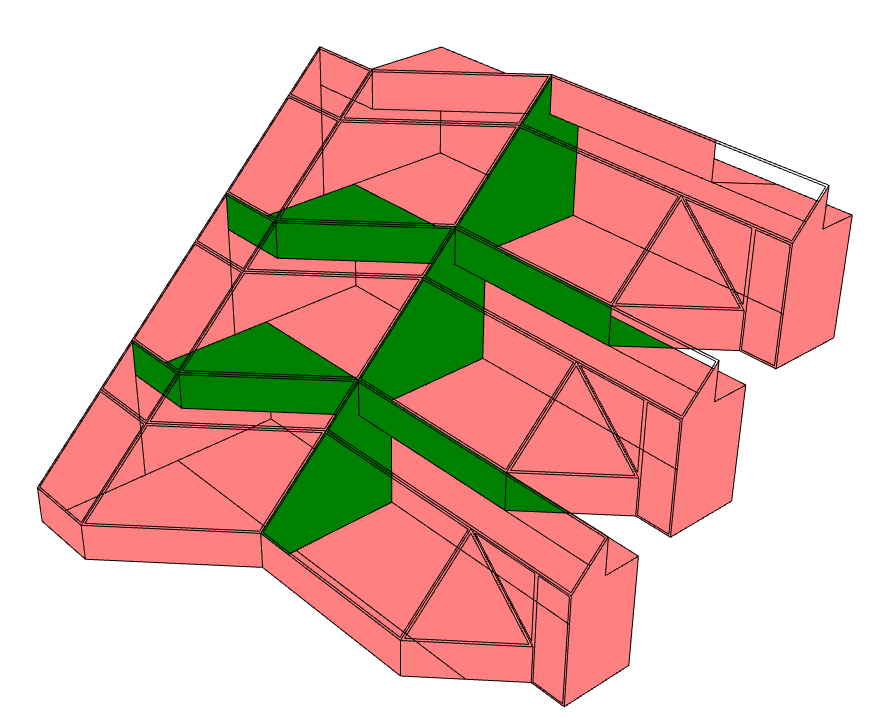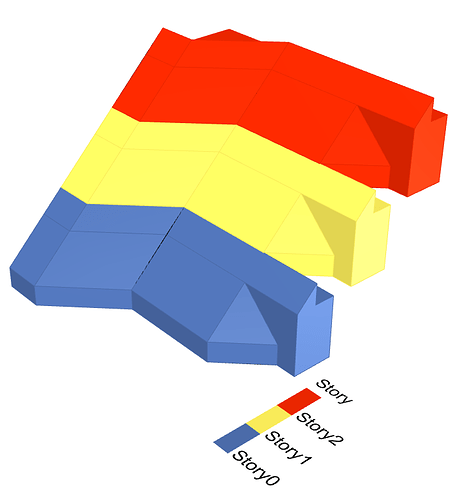Hey @AbrahamYezioro ,
To second what Mostapha said earlier, we’re always impressed by how quickly you can integrate a component we literally added 2 days ago into your workflows. If only there were a discourse badge for “first line of defense against bugs” you would have earned it several times by this point. 
Your file is definitely a correct way to set up an energy model but I also realize that you are asking for a bit of a visual scripting style guide for these cases. Or, to put it in the terms of the Zen of Python, you’re asking when is the Honeybee workflow that I described in the other topic “the one (and preferably only one) obvious way to do it.”
If I were modeling the case in the file you uploaded, I would have to say that Dragonfly is still probably the most elegant and “the one obvious way” to build a model like that. This way, you just set up one of the stories once using 3 Room2Ds and you account for the other repeating stories using Dragonfly Story multipliers. This means that you don’t need all of the native Grasshopper components that duplicate the geometry and you have the option when you export from Dragonfly to either get detailed representations of the repeating stories or just multipliers for a faster simulation.
So, to better illustrate the point I was making in the topic you referenced, I put together a sample that has repeating stories (like Dragonfly) but it does not abide but the extruded-floor-plate logic and therefore requires Honeybee in order to be built. And we will say for the sake of argument that I want to model heat flow between the upper and lower stories such that Dragonfly’s assumption about fully adiabatic floors and ceilings won’t cut it. So, I pulled 2 zones that are part of repeating apartments in my thesis project, which had sloped south-facing greenhouse zones that repeat from one story to the next.
Honeybee_Story_Example.gh (76.5 KB)
Here’s a visual of what the boundary conditions should look like (Pink is adiabatic for the surfaces adjacent to interior zones that I’m not modeling and green is a surface boundary condition):
… and I want to have each of the 2 zones that together make up the apartment have the same story like so:
The file shows you that I can just define zones of one apartment once (with all of the detail about how each of the spaces are used and which adjacencies within the apartment are air boundaries) and then I just move/copy them (with all of their properties) to build up a single model with repeating stories. Then, I solve adjacency between all of them and I have a model that’s effectively like a Dragonfly model in that it’s organized neatly into repeated stories but has the added benefit that the geometry does not need to be extruded floor plates and that I could also solve adjacency between floors (if I intersected the interior surfaces correctly).
You’ll also see that, if I wanted to replicate Dragonfly’s use of multipliers to represent repeating stories in order to have a faster simulation, this is as simple as just connecting the zones to the multiplier component. Then, when I go to simulate them, the results for that zone will just be multiplied by that factor.
Hope this clarifies the points that I was making and when it’s helpful to use Honeybee to build larger models.

